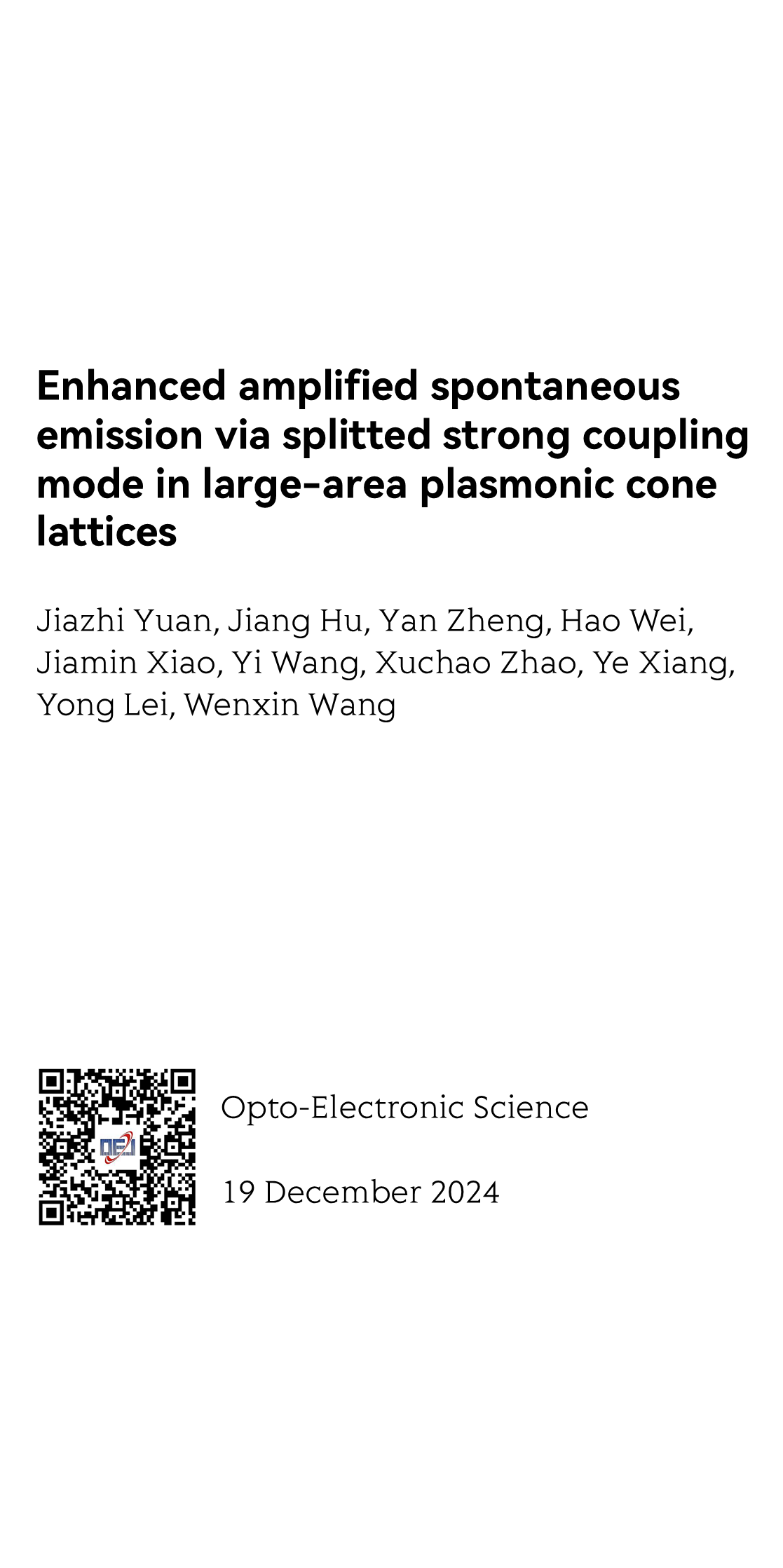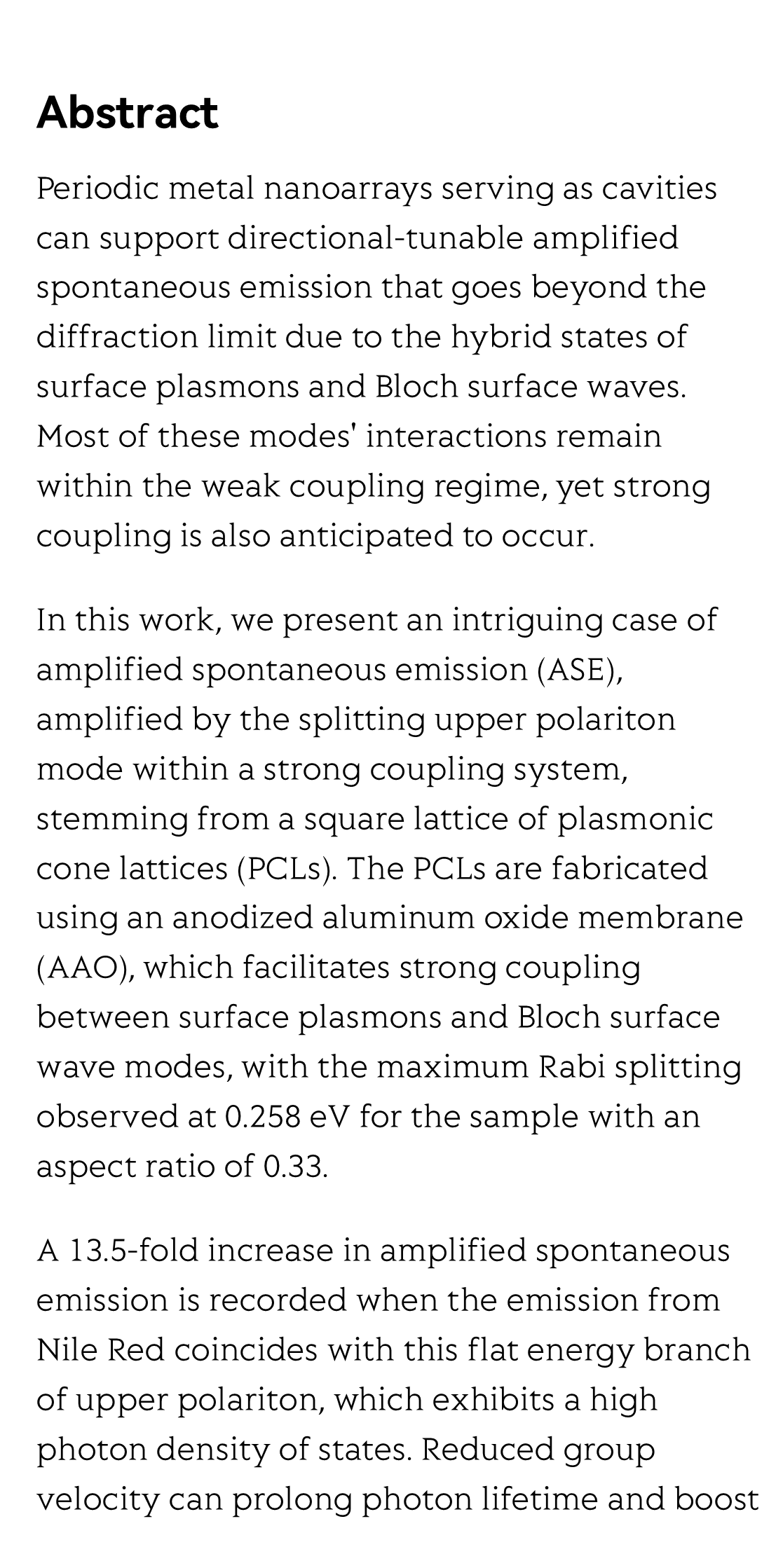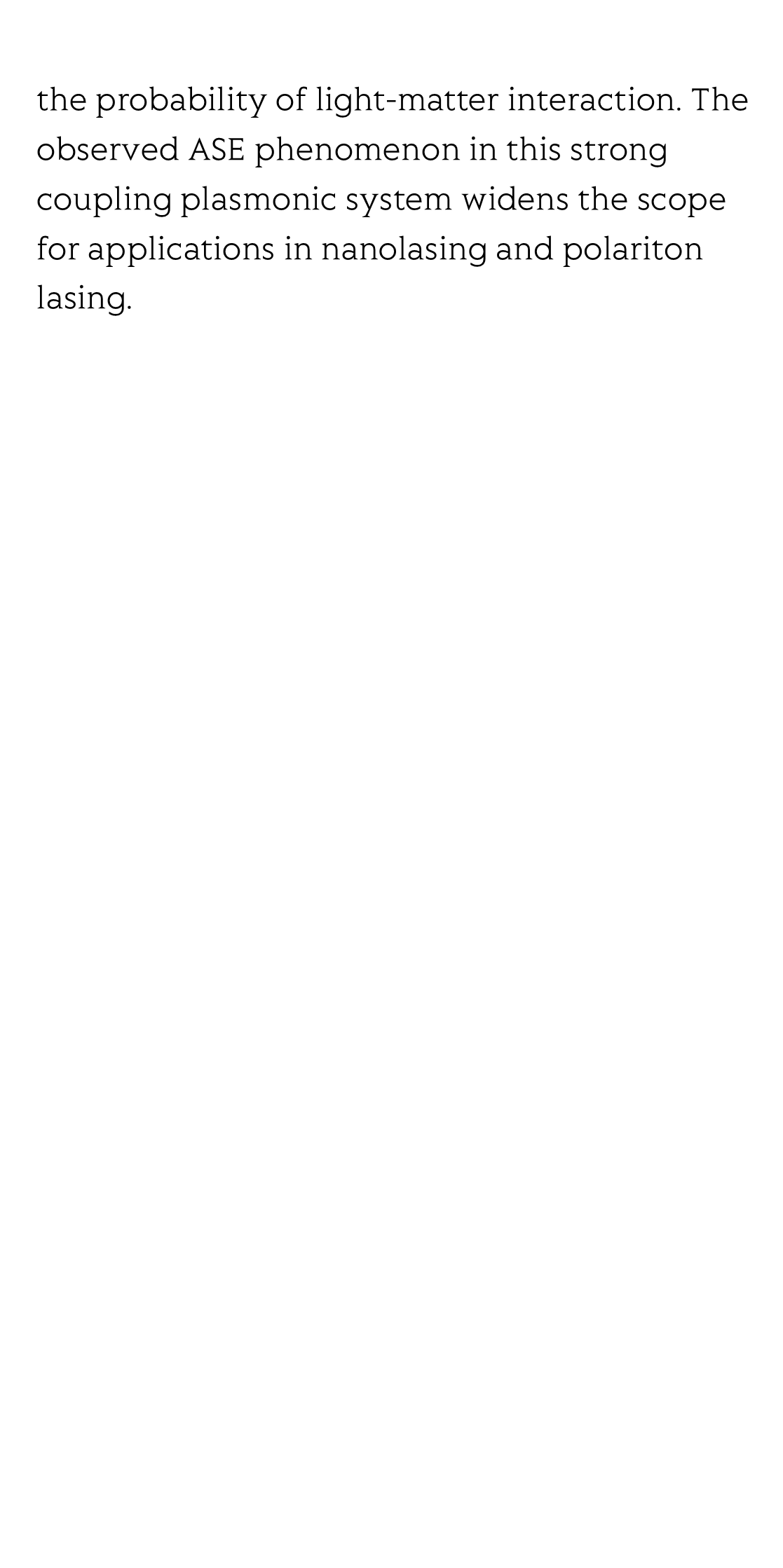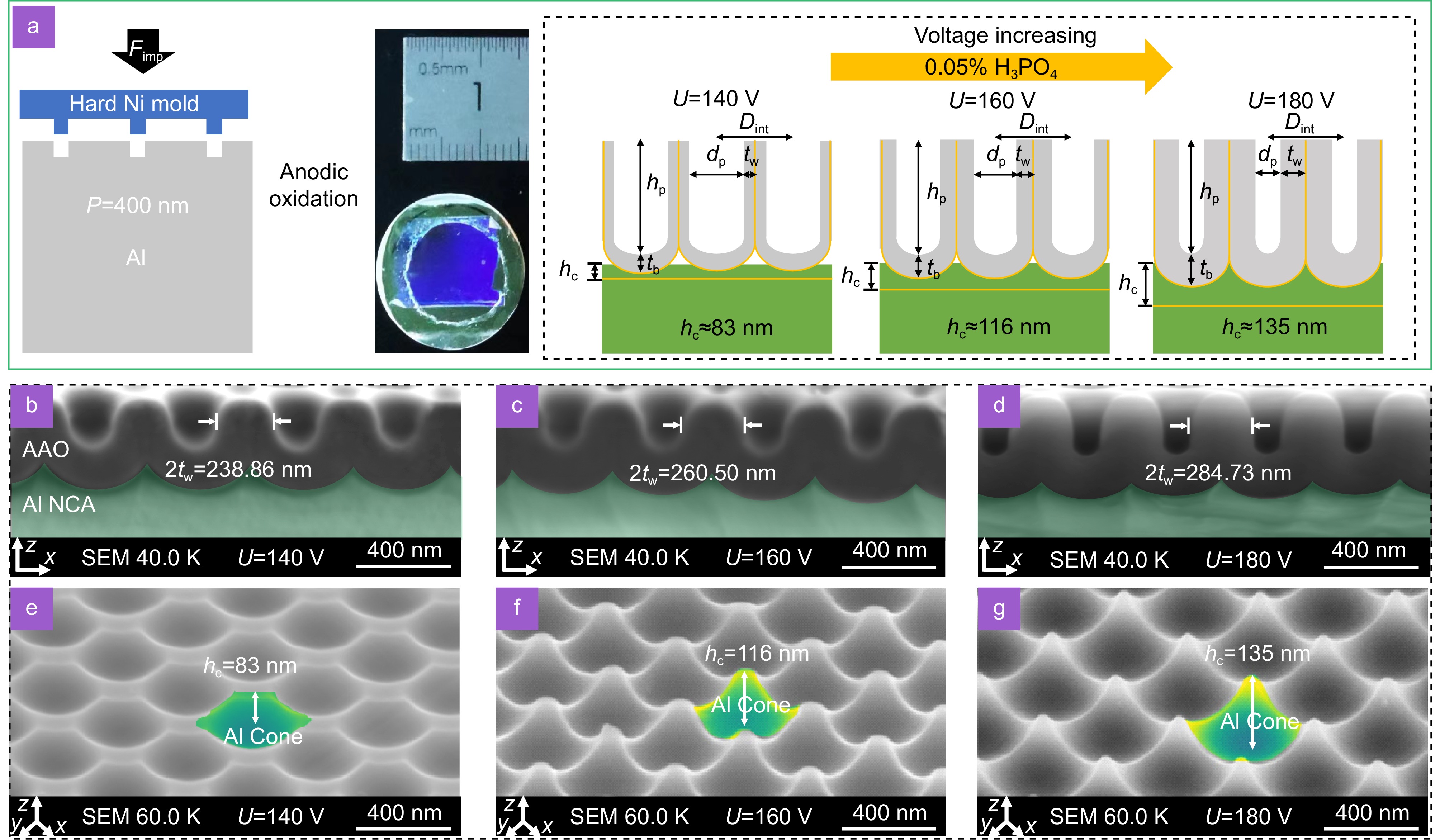(Peer-Reviewed) Enhanced amplified spontaneous emission via splitted strong coupling mode in large-area plasmonic cone lattices
Jiazhi Yuan 袁佳智 ¹, Jiang Hu 胡江 ¹, Yan Zheng 郑燕 ¹ ³ ⁴, Hao Wei 魏浩 ¹ ³, Jiamin Xiao 肖佳敏 ¹, Yi Wang 王祎 ¹ ², Xuchao Zhao 赵绪超 ¹, Ye Xiang 向冶 ¹, Yong Lei 雷勇 ⁴, Wenxin Wang 王文鑫 ¹ ² ⁵
¹ Qingdao Innovation and Development Center of Harbin Engineering University, Harbin Engineering University, Qingdao 266500, China
中国 青岛 哈尔滨工程大学青岛创新发展基地
² College of Physics and Optoelectronic Engineering, Harbin Engineering University, Harbin 150001, China
中国 哈尔滨 哈尔滨工程大学物理与光电工程学院
³ College of Material Sciences and Chemical Engineering, Harbin Engineering University, Harbin 150001, China
中国 哈尔滨 哈尔滨工程大学材料科学与化学工程学院
⁴ Institute of Physics, Department of Mathematics and Natural Sciences, TU Ilmenau, Ilmenau 98693, Germany
⁵ College for Advanced Interdisciplinary Studies, National University of Defense Technology, Changsha 410073, China
中国 长沙 国防科技大学前沿交叉学科学院
Opto-Electronic Science, 2024-12-19
Abstract
Periodic metal nanoarrays serving as cavities can support directional-tunable amplified spontaneous emission that goes beyond the diffraction limit due to the hybrid states of surface plasmons and Bloch surface waves. Most of these modes' interactions remain within the weak coupling regime, yet strong coupling is also anticipated to occur.
In this work, we present an intriguing case of amplified spontaneous emission (ASE), amplified by the splitting upper polariton mode within a strong coupling system, stemming from a square lattice of plasmonic cone lattices (PCLs). The PCLs are fabricated using an anodized aluminum oxide membrane (AAO), which facilitates strong coupling between surface plasmons and Bloch surface wave modes, with the maximum Rabi splitting observed at 0.258 eV for the sample with an aspect ratio of 0.33.
A 13.5-fold increase in amplified spontaneous emission is recorded when the emission from Nile Red coincides with this flat energy branch of upper polariton, which exhibits a high photon density of states. Reduced group velocity can prolong photon lifetime and boost the probability of light-matter interaction. The observed ASE phenomenon in this strong coupling plasmonic system widens the scope for applications in nanolasing and polariton lasing.
Flicker minimization in power-saving displays enabled by measurement of difference in flexoelectric coefficients and displacement-current in positive dielectric anisotropy liquid crystals
Junho Jung, HaYoung Jung, GyuRi Choi, HanByeol Park, Sun-Mi Park, Ki-Sun Kwon, Heui-Seok Jin, Dong-Jin Lee, Hoon Jeong, JeongKi Park, Byeong Koo Kim, Seung Hee Lee, MinSu Kim
Opto-Electronic Advances
2025-09-25
Dual-frequency angular-multiplexed fringe projection profilometry with deep learning: breaking hardware limits for ultra-high-speed 3D imaging
Wenwu Chen, Yifan Liu, Shijie Feng, Wei Yin, Jiaming Qian, Yixuan Li, Hang Zhang, Maciej Trusiak, Malgorzata Kujawinska, Qian Chen, Chao Zuo
Opto-Electronic Advances
2025-09-25







